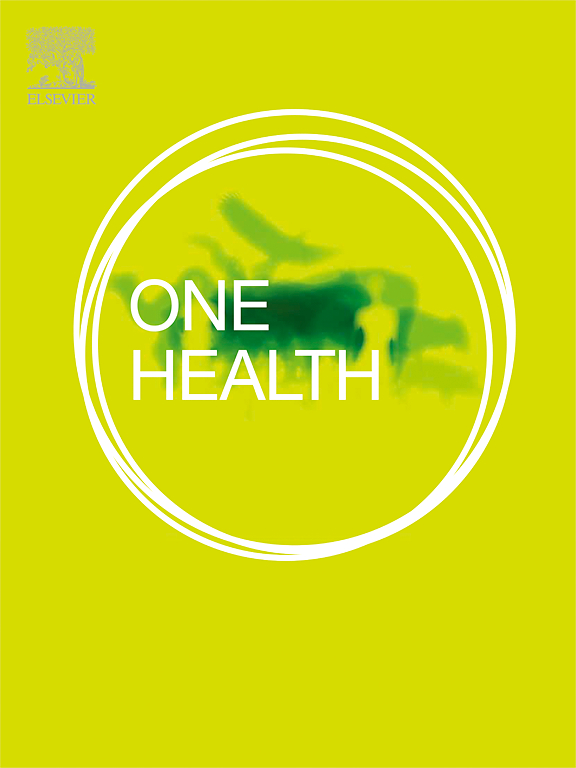IF 4.5
2区 医学
Q1 INFECTIOUS DISEASES
引用次数: 0
摘要
Q热是一种全球性的人畜共患疾病,由专性胞内细菌伯纳蒂克希菌(C. burnetii)引起。使用商用酶联免疫吸附测定试剂盒没有关于伯纳蒂胞杆菌的数据。伯纳蒂胞杆菌感染的总体血清患病率为5.9% (62/1043,95% CI 4.5-7.4)。有趣的是,C. 05)。本调查结果支持c的广泛存在,需要进一步的分子流行病学调查来了解中国青海省布氏c传播的流行病学。本文章由计算机程序翻译,如有差异,请以英文原文为准。
Serological evidence of Q fever in Tibetan sheep in Qinghai Province, China
Q fever, caused by the obligate intracellular bacterium Coxiella burnetii (C. burnetii), is a global zoonotic disease. No data is available about C. burnetii infection in Tibetan sheep in Qinghai, China. In this study, 1043 Tibetan sheep serum samples (421 females and 622 males) were collected from 8 regions in Qinghai Province and examined for antibodies against C. burnetii using a commercial ELISA Kit. The overall seroprevalence of C. burnetii infection was 5.9 % (62/1043, 95 % CI 4.5–7.4). Interestingly, C. burnetii infection rates in Tibetan sheep showed no statistically significant correlations with age, geographical region, and gender (P > 0.05). The results of the present survey support the widespread presence of C. burnetii in Tibetan sheep in Qinghai, also providing baseline data for improving livestock management, preventing and controlling Q fever in large ruminants in the region. Further molecular epidemiological investigations are warranted to understand the epidemiology of C. burnetii transmission in Qinghai, China.
求助全文
通过发布文献求助,成功后即可免费获取论文全文。
去求助
来源期刊

One Health
Medicine-Infectious Diseases
CiteScore
8.10
自引率
4.00%
发文量
95
审稿时长
18 weeks
期刊介绍:
One Health - a Gold Open Access journal.
The mission of One Health is to provide a platform for rapid communication of high quality scientific knowledge on inter- and intra-species pathogen transmission, bringing together leading experts in virology, bacteriology, parasitology, mycology, vectors and vector-borne diseases, tropical health, veterinary sciences, pathology, immunology, food safety, mathematical modelling, epidemiology, public health research and emergency preparedness. As a Gold Open Access journal, a fee is payable on acceptance of the paper. Please see the Guide for Authors for more information.
Submissions to the following categories are welcome:
Virology,
Bacteriology,
Parasitology,
Mycology,
Vectors and vector-borne diseases,
Co-infections and co-morbidities,
Disease spatial surveillance,
Modelling,
Tropical Health,
Discovery,
Ecosystem Health,
Public Health.
 求助内容:
求助内容: 应助结果提醒方式:
应助结果提醒方式:


